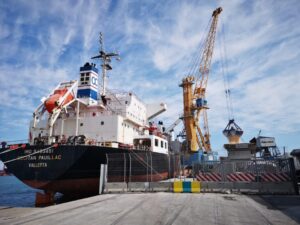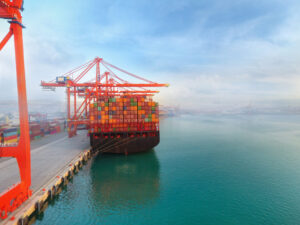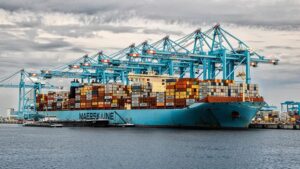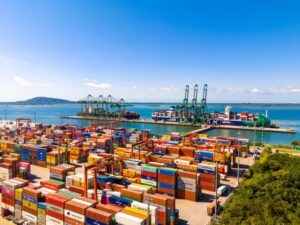Data released by the International Transport Forum (ITF), as part of its ‘Real Impacts of Mega-ships’ report gives a breakdown of the top 10 ports globally with the highest berth productivity, shown in the number of berth crane moves per hour.
PTI recently published an infographic showing how well global ports were performing in terms of berth productivity, while only showing the performance range, not the specific number of hourly container moves.
According to the ITF’s report, the workload for terminals to servicing container ships has risen by 709% since 1975, with the average workload performed by each crane having risen by 382%.
However, the number of quay cranes deployed to work a ship has only increased by 87%.
To read the full report, click here
The top 10 ports for berth productivity, measured by berth crane moves per hour are:
(Source: Olaf Merk / ITF)
Olaf Merk, Administrator of Ports and Shipping at the ITF, said: “At first sight, the differences in berth productivity between the top 10 ports could be surprising. I think there are three main explanations: automation, customer base and location. Ports with automated terminals will be able to achieve higher berth productivity levels, but it might come at the cost of terminal flexibility.
To read a technical paper by Olaf Merk on ports and the energy transition, click here
“Ports with a few limited large customers – so specialised, dedicated container ports – have more possibilities to achieve higher productivity rates by working closely with their main customers (e.g. big shipping lines like Maersk that have managed to achieve high productivity levels in the terminals that they are calling).”
Eivind Kolding, then CEO of Maersk Line called for productivity levels as high as 6,000 container moves in 24 hours back in 2011. However, Drewry argue that to achieve the higher productivity demands of the world’s largest carriers, a revolution is needed in the way containers are handled.
Olaf Merk concluded: “In contrast, ports with a broad and varied customer base, do not have this advantage as their advantage is in providing the largest connectivity possible and make sure that overall supply chain reliability is kept. Finally location: hubs where various trade lanes come together (east-west, north-south, south-south etc.) will have more complex considerations to take into consideration than only berth productivity.”









